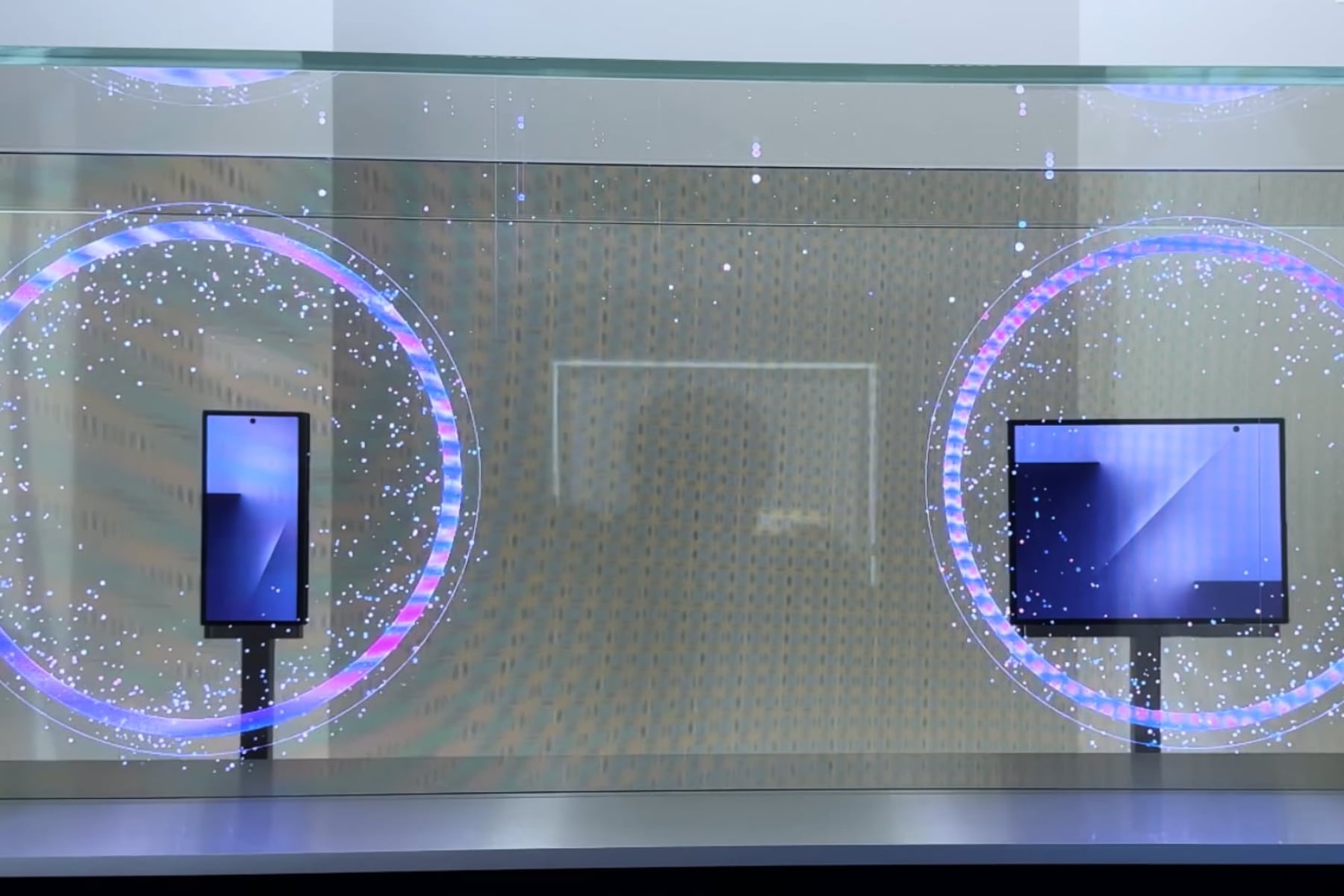
Samsung finally showed off its Galaxy Z Tri-fold at the APEC Summit in Gyeongju, South Korea. Nobody got to actually touch it, but the behind-glass display gave us our first real look at what might be Samsung’s craziest foldable phone yet.
Here’s the kicker: I was literally in Seoul the same week as a guest of Samsung’s Digital Appliance team. Gyeongju is just a few hours away. So close, yet so far. Eyes on only, no hands-on with what might be the most interesting phone Samsung’s built in years.
The irony isn’t lost on me.
Anyway, no hands-on allowed at APEC and Samsung kept the specs locked down. But what we could see tells us plenty about where they’re taking this three-screen concept. The Korean tech press covering the event went nuts for it. According to SBS Korea’s coverage, people were impressed by how Samsung’s clearly prioritizing durability over everything else. Sure, the bezels on these prototypes look a bit chunky, but one reviewer captured the vibe perfectly: “The utility when unfolded looks so clear.”
Translation: once you see this thing open up, you immediately get why someone would want three screens.
The device transforms from a standard 6.5-inch smartphone display when folded into a wide 10-inch screen when fully opened. That’s essentially three regular smartphone screens lined up side by side. Samsung displayed both the folded and unfolded versions behind glass, letting observers study the engineering from multiple angles.
What You Can Actually Do With 10 Inches
Think about multitasking with three apps side by side. Email on the left panel, a video call in the center, your notes or calendar on the right.
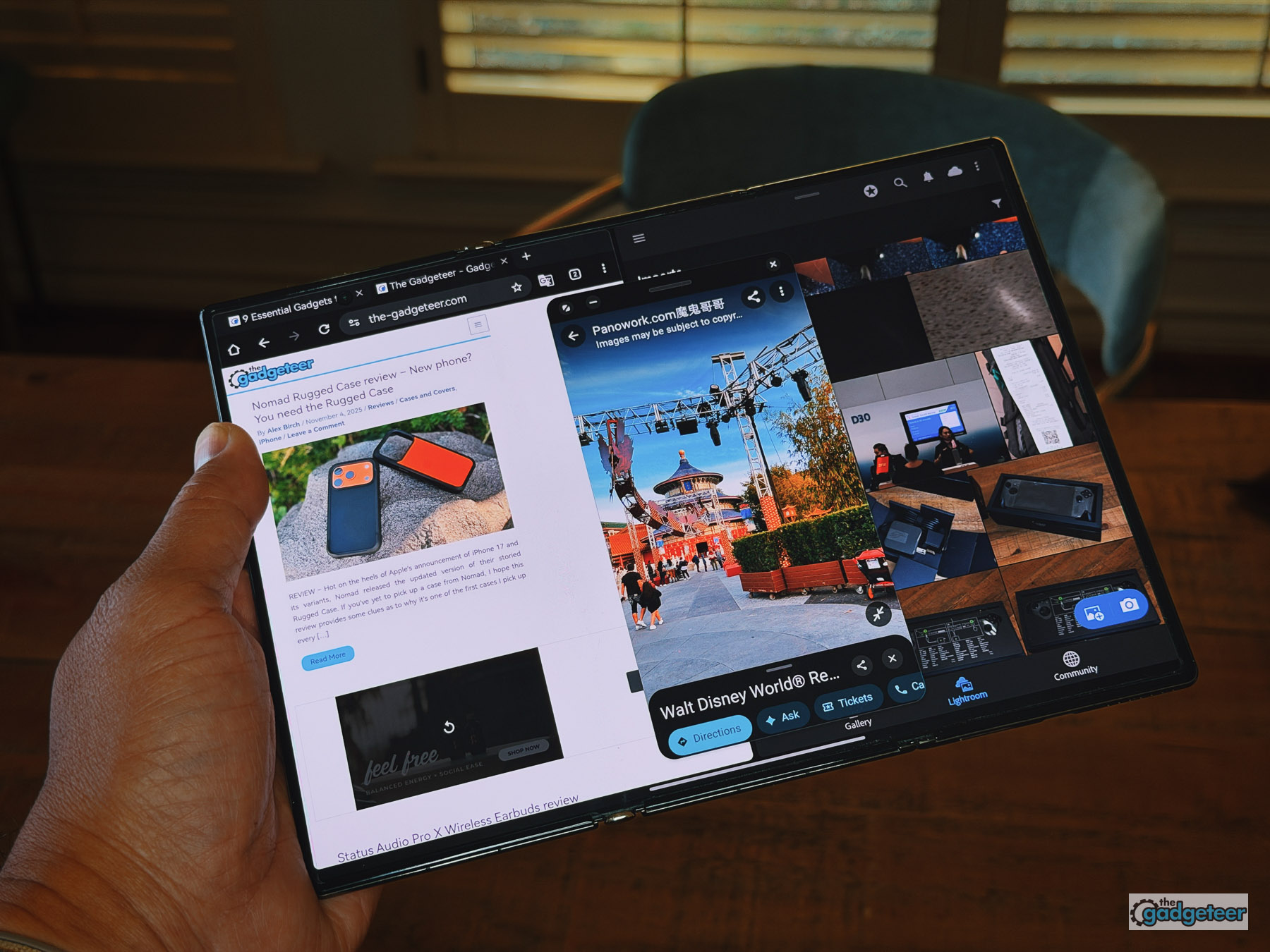
Or just watching widescreen movies without squinting. Samsung’s clearly trying to make the tri-fold a real productivity machine that bridges the gap between phone and tablet. One device that adapts to whatever you need it to do.
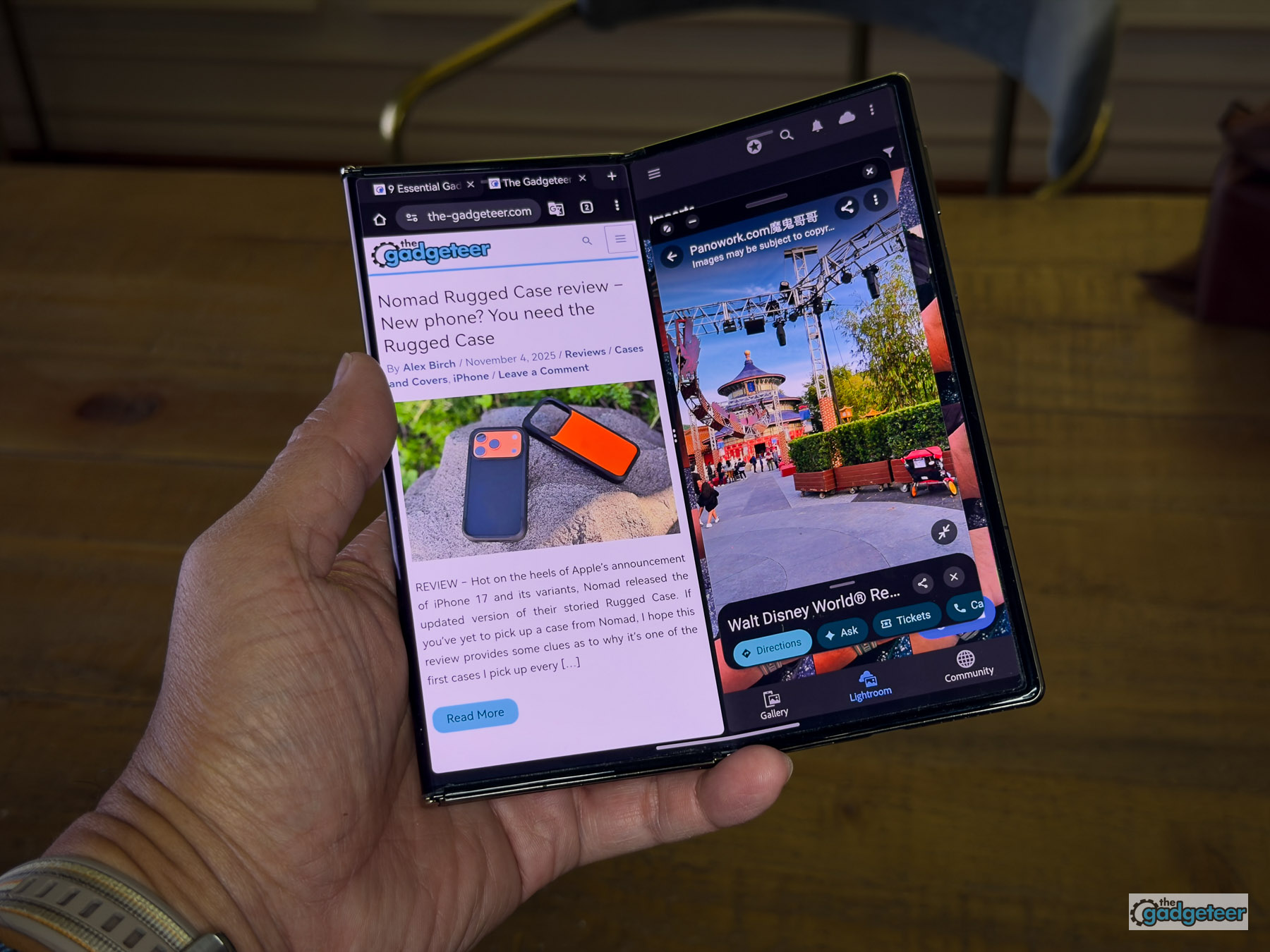
How It Folds: The Dual Infolding Approach
Samsung went with a dual infolding design where both display panels fold inward. Screens stay protected when closed.
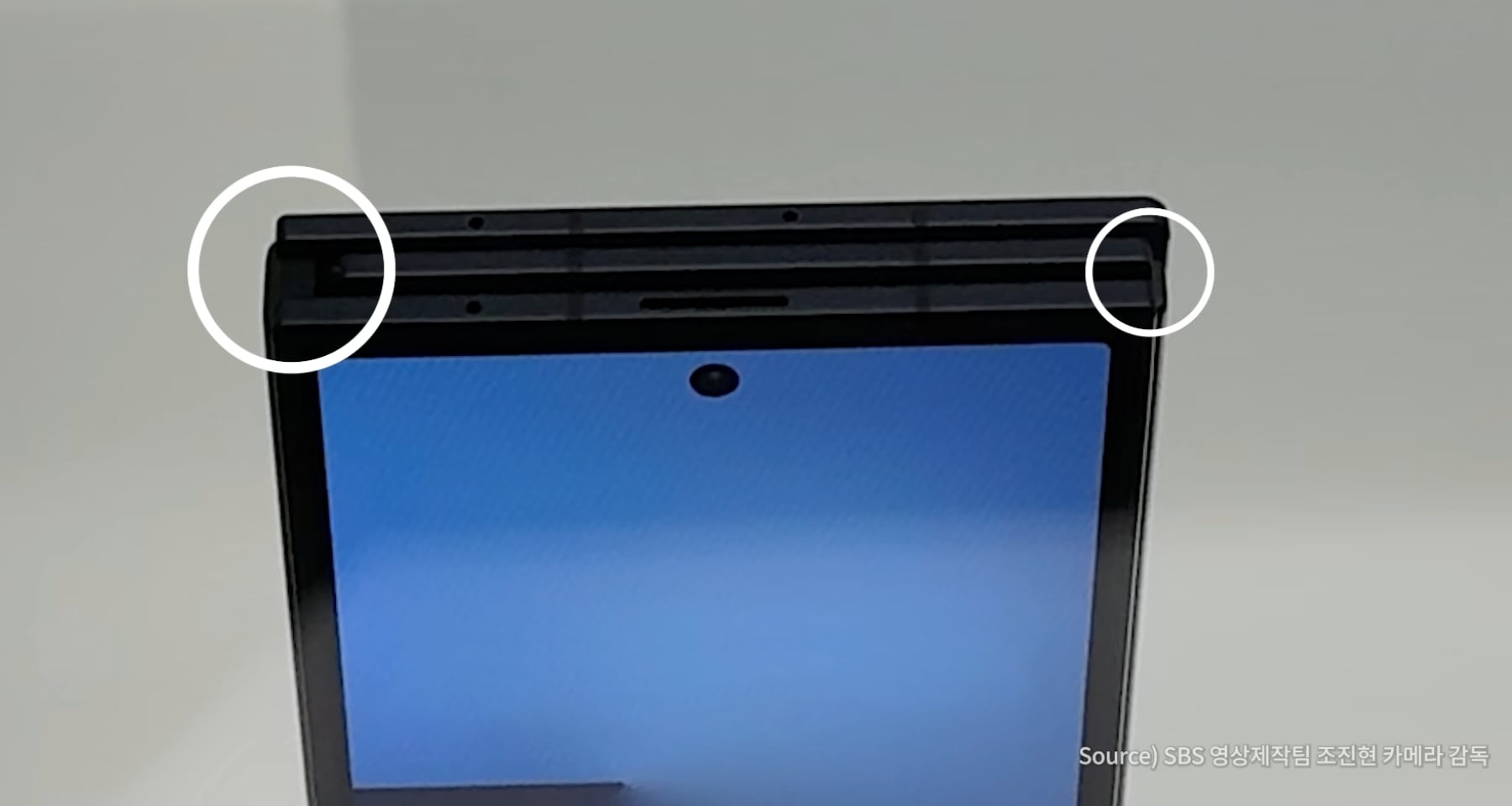
This is different from Huawei’s Mate XT approach, which uses a Z-fold pattern with one outward fold. Huawei’s method lets you use one panel as an external display without unfolding, but Samsung’s prioritizing durability over that convenience. The tradeoff? Samsung’s version needs an additional external display on the back for quick glances and notifications.
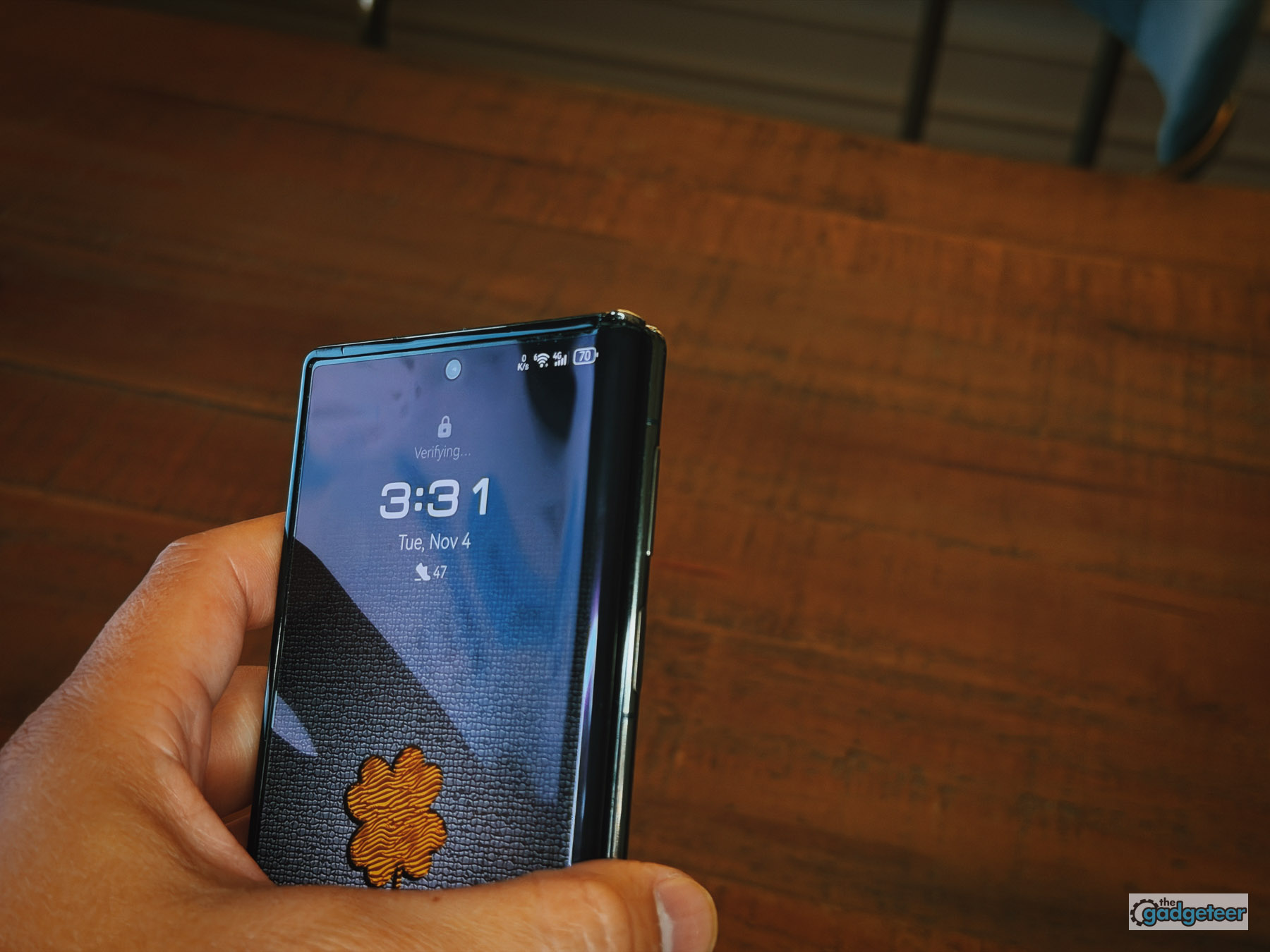

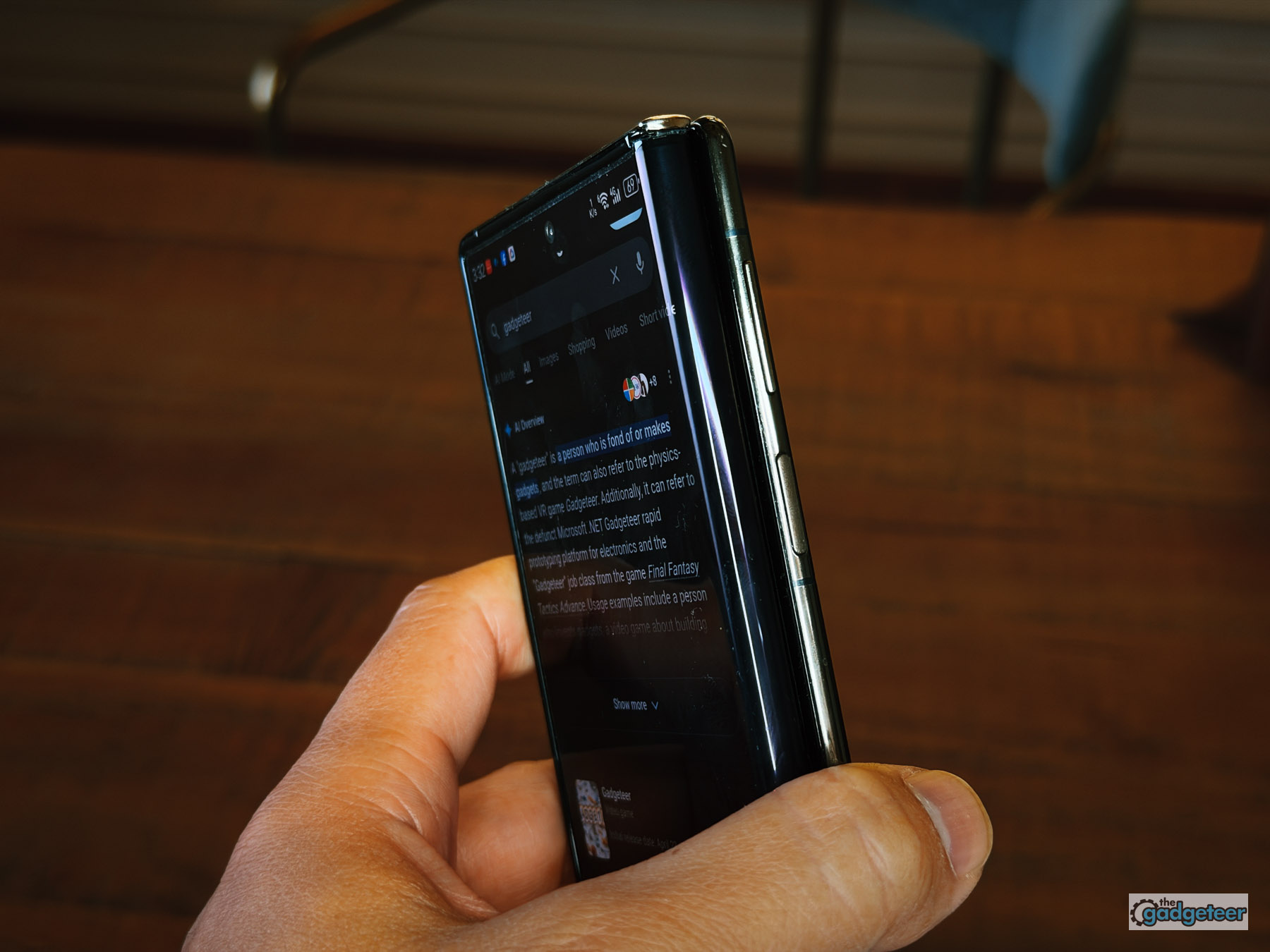
Why Durability Matters Here
Samsung’s inward-folding approach keeps the flexible OLED panels protected from scratches, drops, and everyday wear. Huawei’s Mate XT Ultimate? That thing leaves one panel perpetually exposed on the outside when folded, making it vulnerable to damage.
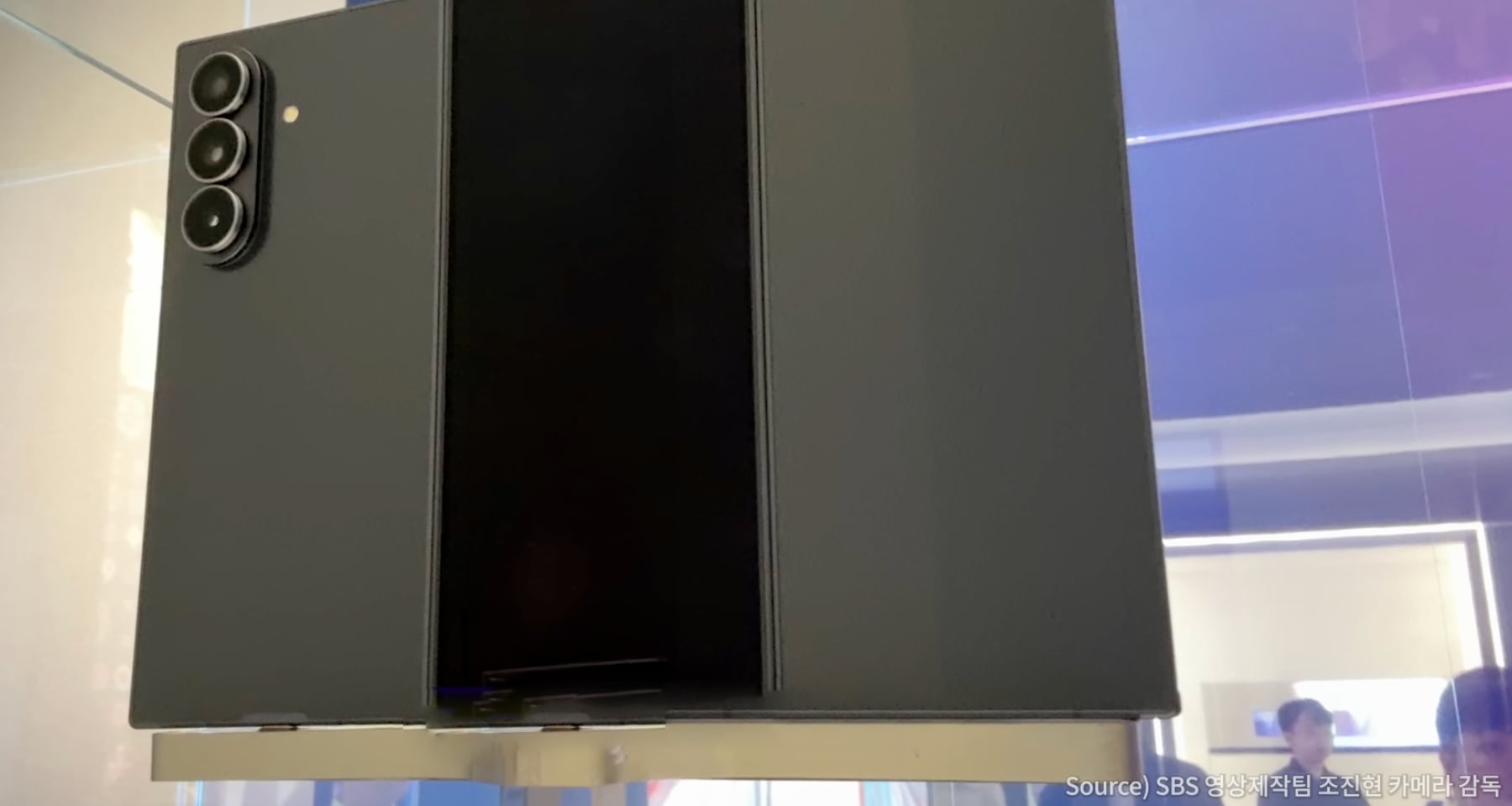
After seven generations of foldable refinement, Samsung learned that exposed flexible displays don’t hold up well to real-world abuse. The dual infolding design trades a bit of convenience for significantly better long-term durability. And that matters when you’re asking customers to pay $2,500-plus for a phone.
The folding mechanism uses two hinges with different bend radii. Left hinge folds with a wider curve, right side bends more sharply. This creates a sequential folding pattern. Front-facing elements include a speaker grille running along one edge with small dots marking the microphone positions.
When folded, the device measures approximately the width of an adult finger, maybe slightly wider. That’s thicker than a standard phone but impressively thin considering it’s essentially three screens stacked together.
Design Details and Camera Setup
From the back, the Galaxy Z Tri-fold looks nearly identical to the Galaxy Z Fold 7 in its folded state. Same triple camera arrangement, matching LED flash placement, side-mounted fingerprint scanner integrated into the power button.
Samsung hasn’t confirmed camera specs yet. But industry sources suggest the triple rear setup may include a 200MP main sensor, 12MP ultrawide, and 10MP telephoto with 3x optical zoom. If accurate, that would match Samsung’s current flagship camera strategy.
Thickness when unfolded appears similar to the Fold 7, based on the visible camera and power button dimensions on the side profile. Current prototypes do show noticeable bezels around the displays, though these may slim down before final production units ship.
What’s Under the Hood (Rumored)
Samsung hasn’t officially announced specifications, but technical leaks point toward flagship-tier internals. We’re talking Qualcomm’s Snapdragon 8 Elite processor with up to 16GB of RAM and storage options ranging from 256GB to potentially 1TB.
That configuration would make the Tri-fold a productivity powerhouse capable of handling heavy multitasking across that expansive 10-inch display.
The Software Question Nobody’s Answered Yet
Here’s where things get interesting. The hardware looks impressive on display, but the real test will come when reviewers get their hands on working units. How will Samsung’s One UI and Android adapt to three separate screen panels that fold independently?
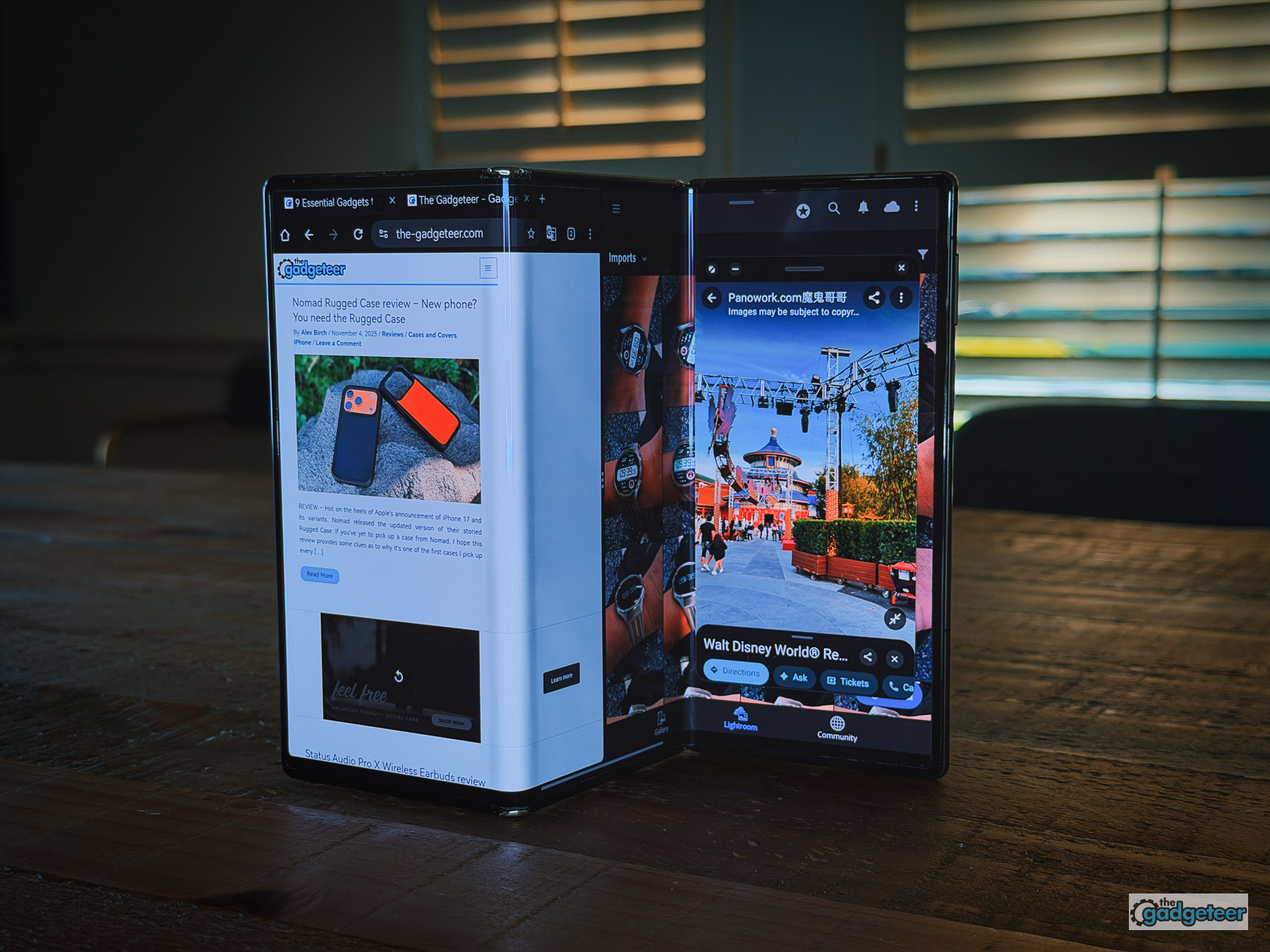
Will app developers need to optimize specifically for the Tri-fold’s unique aspect ratios? Or will Samsung’s software handle the transitions automatically?
Expect early reviews to focus heavily on whether the multi-panel experience feels intuitive or glitchy in everyday use. Questions about app continuity, multitasking reliability, and whether the interface properly adapts when you partially unfold the device remain unanswered.
Samsung has seven generations of foldable software refinement under its belt. But a tri-fold design presents entirely new challenges that won’t be solved overnight.
How the Tri-fold Stacks Up Against Huawei
| Model | Design/Fold | Display Size (Open) | Durability Focus | Likely Markets |
|---|---|---|---|---|
| Samsung Galaxy Z Tri-fold | Dual infolding, closed main display | ~10″ | Very high | South Korea, China, Singapore, Taiwan, UAE |
| Huawei Mate XT Ultimate | One outfold, one infold, always exposed | ~10.2″ | Modest (exposed OLED) | China, limited export |
Price, Availability, and Launch Strategy
Samsung hasn’t announced pricing or a firm launch date yet. But industry observers expect the Galaxy Z Tri-fold to hit the market in late November or early December 2025, timed for the holiday buying season. Korean media estimates place the price between $2,250 and $3,000 USD.
Yeah, firmly in ultra-premium territory.
More significantly, Samsung appears to be planning an extremely limited initial rollout. Reports suggest production of just 50,000 to 200,000 units for the first wave, launching exclusively in Asian markets including South Korea, China, Singapore, Taiwan, and possibly the UAE.
Don’t expect this in US or European stores anytime soon.
Tech insiders view this launch as more of a concept showcase, much like the original Galaxy Fold generation. Expect early adopters and collectors to scramble for what could become a cult favorite among foldable enthusiasts. The scarcity strategy positions the Tri-fold as an exclusive tech statement piece rather than a mass-market device, which could actually boost desirability among the premium smartphone crowd who want to own something genuinely rare.
This conservative strategy makes sense. The Tri-fold represents Samsung’s boldest foldable design yet, blending phone and tablet form factors in a way that promises significant multitasking and productivity gains. But it’s also a “concept launch” device aimed at enthusiasts and professionals willing to pay premium prices for bleeding-edge technology.
Samsung needs to prove the durability, optimize the software experience, and gauge real-world demand before committing to mass production. The utility of the unfolded 10-inch display seems obvious for multitasking, media consumption, and productivity tasks.
Whether enough consumers will pay $2,500-plus for that extra screen real estate remains the question Samsung will need to answer. With seven generations of foldable refinement behind them through the Z Fold and Z Flip lines, Samsung has the experience to pull this off.
Now we just need to see if the market is ready for three screens instead of two.
Summary
Samsung unveiled the Galaxy Z Tri-fold at the APEC Summit in Gyeongju, South Korea, showcasing a tri-foldable smartphone that transforms from a 6.5-inch screen when folded to a 10-inch display when unfolded. The device features a dual infolding design with two hinges, prioritizing durability by keeping the screens protected when closed, unlike competitors like Huawei’s Mate XT Ultimate which leaves one panel exposed. The TriFold maintains design consistency with the Galaxy Z Fold 7, featuring a triple rear camera setup and punch-hole displays. Expected to launch in late November or early December 2025 with pricing between $2,250 and $3,000 USD, this will be an extremely limited release (50,000-200,000 units) exclusively in Asian markets including South Korea, China, Singapore, Taiwan, and the UAE. While the hardware promises significant multitasking and productivity gains, questions remain about how Samsung’s One UI will adapt to the unique tri-fold form factor and whether app developers will need to optimize for its unconventional aspect ratios.
Samsung Galaxy Z Tri-fold
Price: Expected $2,250 – $3,000 USD
Availability: Late November/Early December 2025 (Limited Asian Markets)


